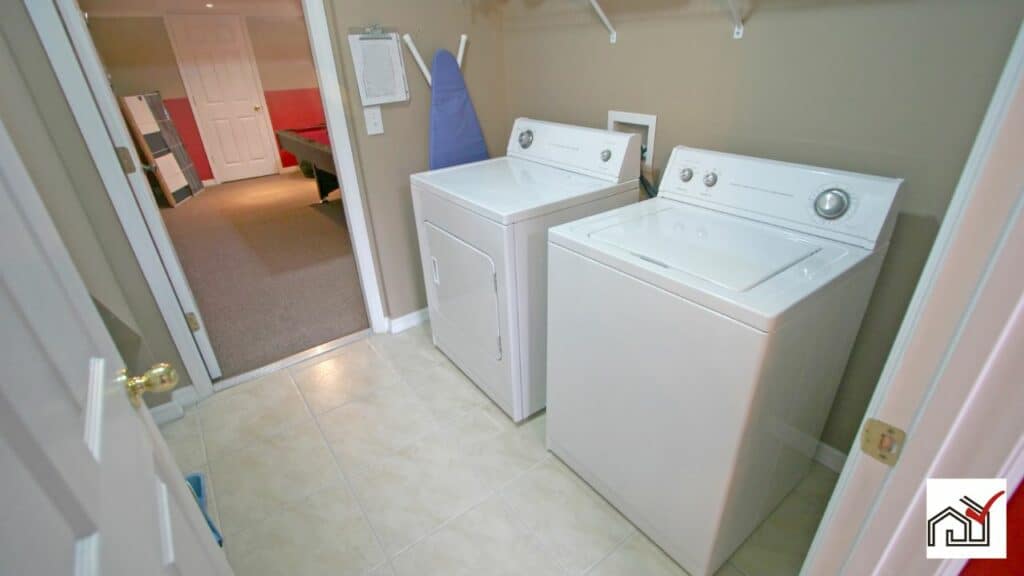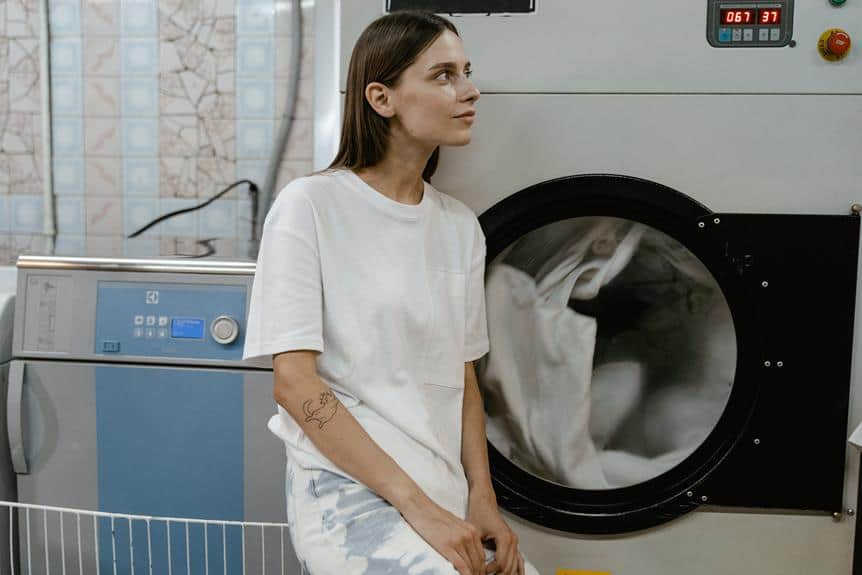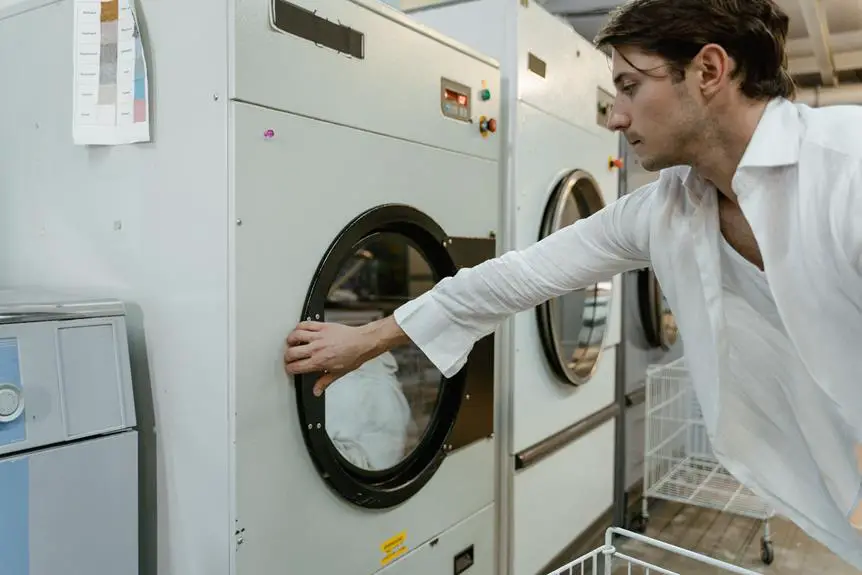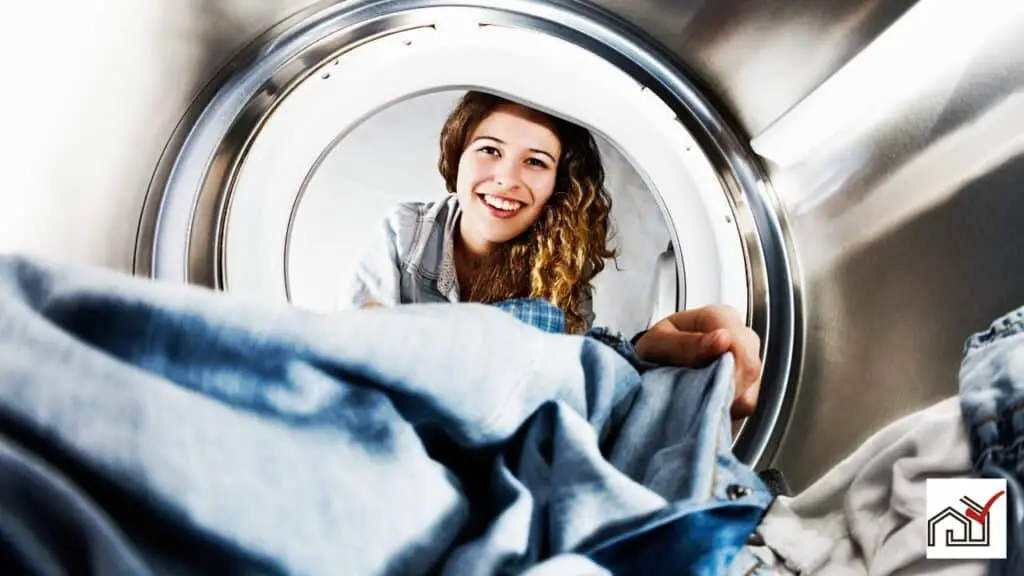A laundry room may have a door to reduce noise from appliances and increase privacy.
A door can also help the room blend in with the home's decor.
However, not having a door can improve air circulation and prevent mold.
The choice to install a door depends on the importance of these factors and the homeowner's preference.
Door Functionality Explained
A laundry room door has three main purposes: reducing noise, hiding clutter, and allowing ventilation to prevent mold and odors.
Washing machines and dryers can be loud, so a properly installed door helps to lessen this noise and keep the home quiet.
The door also hides the mess commonly found in laundry areas, such as detergent bottles and clothes, helping to keep the home's appearance neat.
Ventilation is another important function of a laundry room door. The heat and moisture from laundry appliances can cause mold and bad smells. Doors with vents or louvers help let out humid air and let in fresh air, preventing moisture damage and keeping the room dry and odor-free.
Noise Control Solutions
Homeowners often choose soundproof doors to reduce noise from laundry appliances, which can be loud and disruptive, especially near living spaces. The demand for these noise control solutions is growing to maintain a quiet home.
A common choice is a solid core door, which is heavier and better at blocking sound from washers and dryers than hollow doors, leading to a quieter environment.
Sliding doors, while not as soundproof as solid core doors, can save space and look good. They can also reduce noise if they have sound-absorbing materials or seals.
For those who need ventilation as well as noise control, louvered doors are an option. They're not as soundproof because of their vents but allow air flow to prevent humidity and odors in the laundry room.
To further reduce noise, homeowners can use anti-vibration pads under appliances, balancing air quality with noise reduction.
Privacy and Aesthetics
When designing a laundry room, it's important to consider the function of a door for privacy and decoration. A door hides the room's contents and can enhance the home's overall style. Homeowners can choose from various door styles that match their home's design.
Louvered doors allow air flow, which is beneficial in a laundry room to prevent moisture and heat accumulation. They also maintain privacy while keeping the room looking neat.
Frosted glass doors offer privacy and let in light, making a small space appear larger and giving a modern look.
Sliding barn doors are suitable for homes with rustic or industrial styles. They save space and function as a design element. These doors slide on a track, so they don't need space for opening into the room, and they can be tailored to fit the home's decor.
Safety and Accessibility
A laundry room door is important for safety and accessibility. It serves as a protective barrier against potential hazards such as fires, which can be caused by heat-generating appliances like washers and dryers. A sturdy door can help slow the spread of fire, providing more time for evacuation and contacting emergency services.
The door also contributes to maintaining indoor air quality. A ventilated door, such as one with louvers, can prevent the build-up of hazardous gases, particularly from gas dryers, and reduce mold growth by allowing damp air from the laundry to escape.
Additionally, the door should be accessible to everyone, including those with mobility challenges. A louvered bifold door can be a good option because it requires less space to open and close while still providing ventilation and privacy.
Ventilation and Airflow
Proper ventilation in laundry rooms is crucial to preserve air quality and prevent moisture issues. Laundry appliances produce heat and humidity, which can lead to mold growth, health risks, and musty smells without adequate airflow. Ventilation methods include installing louvered doors or keeping the door open during appliance use, especially in smaller, closet-style laundry spaces where humidity accumulates quickly.
In addition to comfort, ventilation is important for safety, particularly with gas dryers that emit potentially dangerous gases. Adequate ventilation prevents gas build-up and reduces fire risk. It is vital for home safety and structural maintenance to ensure sufficient airflow in laundry rooms.
Space Considerations
Ventilation and airflow are important in laundry rooms. In small laundry rooms, traditional swinging doors can take up too much space. Removing the door can make the room look bigger and provide more space for moving around and storage.
If there is no door, an open-concept design can make the space feel larger and more connected to surrounding areas. If privacy is a concern, sliding glass doors are a space-saving option that keeps the room visually open.
To make the most of a small laundry room, it's recommended to use shelves or cabinets for storage. Wall-mounted storage solutions help organize the space without using floor space.
The choice to have a door in the laundry room should be based on the household's needs, space, and how open they want the room to be. With careful planning, a laundry room can be both functional and visually appealing, no matter its size.
Maintenance and Durability
Regular maintenance of the laundry room's ventilation system is key to its longevity and prevents damage from humidity and appliance wear. The type of doors used can affect airflow; louvered doors, for instance, enhance circulation to reduce mold and dampness, extending the room's lifespan.
Door materials also impact laundry room durability. Solid core doors, like those made of Masonite, provide good sound insulation and are durable, helping to keep appliance noise contained and withstand frequent use.
Yet, adequate ventilation must be considered alongside soundproofing. Solid core wood doors with built-in ventilation, such as louvered sections, offer both durability and air circulation. Sliding glass doors can make the space feel open and bright, but they must be paired with proper ventilation to prevent moisture buildup and maintain the room's condition.
Door Style Options
When choosing doors for a laundry room, consider both appearance and practicality, including venting needs.
Louvered doors are a common option due to their ability to promote airflow, which helps control heat and humidity from laundry appliances. These doors come in full or half-louvered styles, offering different levels of privacy and ventilation. The slats allow air to move while the door is shut, preventing moisture accumulation.
Sliding barn doors are suitable for small spaces as they do not require clearance for opening. They also add a rustic look to the room.
If natural light is important, consider sliding glass or French doors to brighten the space. French doors provide a classic look but require space for the door swing, which should not block appliances or storage.
Choose laundry room doors that fit your style and meet the room's specific needs, whether you prefer swinging, sliding, or French doors. The aim is to find a balance between aesthetics and functionality.




